Statistics of the ALTUM Buildings energy efficiency program
The “Energy Efficiency in Multi-Apartment Buildings” program of the State Development Financial Institution ALTUM started in the spring of 2016 and is in the active stage of project implementation, new project applications are not accepted. A total of 989 project applications were submitted to the program, of which 347 have been already completed, and 124 are in the construction stage. To date, ALTUM has paid out a total of 124 million euros in frame of this program, which is ¾ of the total amount of available grants.
All the most important data of submitted project applications are available on the ALTUM website, including technical documentation (heat energy consumption and its reduction, CO2 emissions, building area, etc.), building contractors, construction supervisors, costs and application of financial correction. Researchers from the INM Stanislavs Gendelis has conducted a statistical analysis of publicly available data, the main results of which are presented below:
1.) Number of projects by regions of Latvia. Half of all projects (51%) consist of two cities – Riga and Liepāja, together with three counties – Olaine, Sigulda and Valmiera. The least number of projects, one each, have been submitted from Varakļani, Augšdaugava and Krāslava counties. It should be noted that only 3 projects have been approved from the second largest city, Daugavpils. Figure below shows number of buildings in the cities and counties.
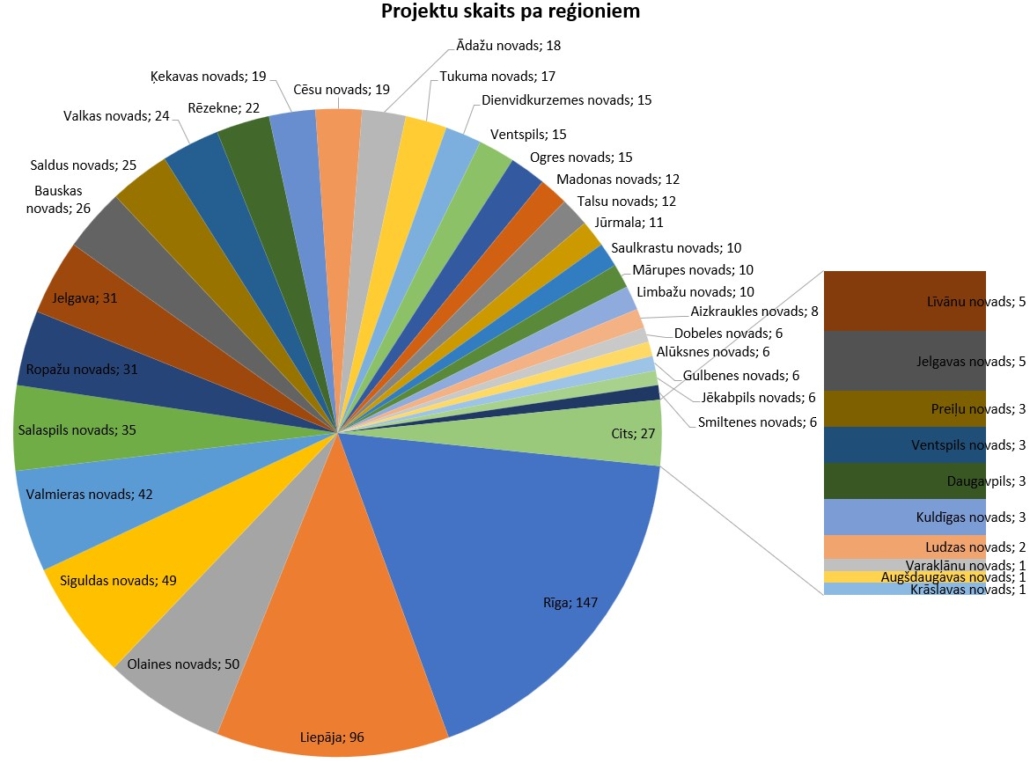
2.) Area of buildings and year of construction. Two-thirds of the buildings are between 500 and 3,000 m2, but the total range is from 190 m2 up to 16,500 m2. Figure below shows the number of buildings by the area.
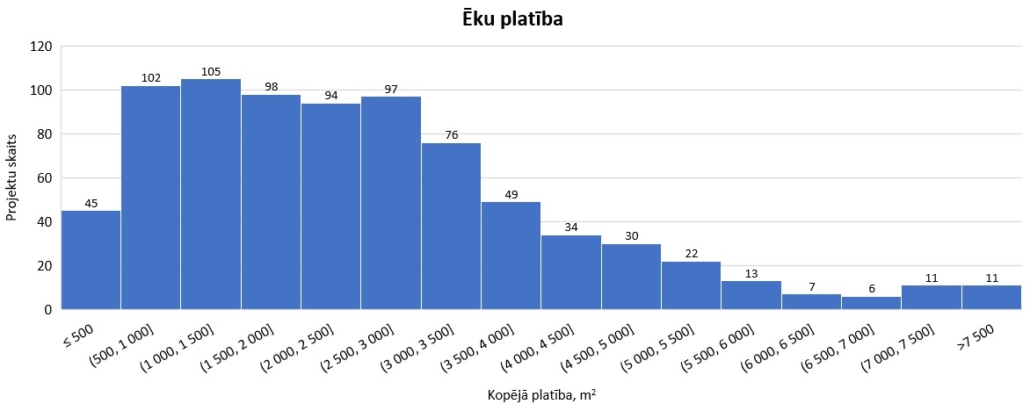
Most of all buildings were built in the Soviet time (1955-1990) with a peak in 1970-1985. The oldest building was commissioned in 1870, and the newest in 2008. Figure below shows the number of buildings by the year of construction.
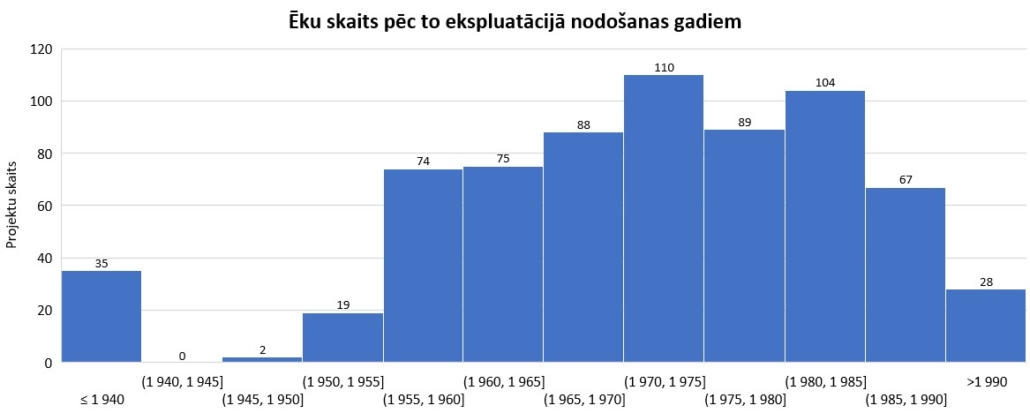
3.) Heating consumption in buildings before and after implementation of energy efficiency measures. In most of the buildings (75%) before the measures annual heating energy is within 100…160 kWh/m2 range with peak between 120 and 150 kWh/m2. Figure below shows the number of buildings by the heating consumption before the measures.
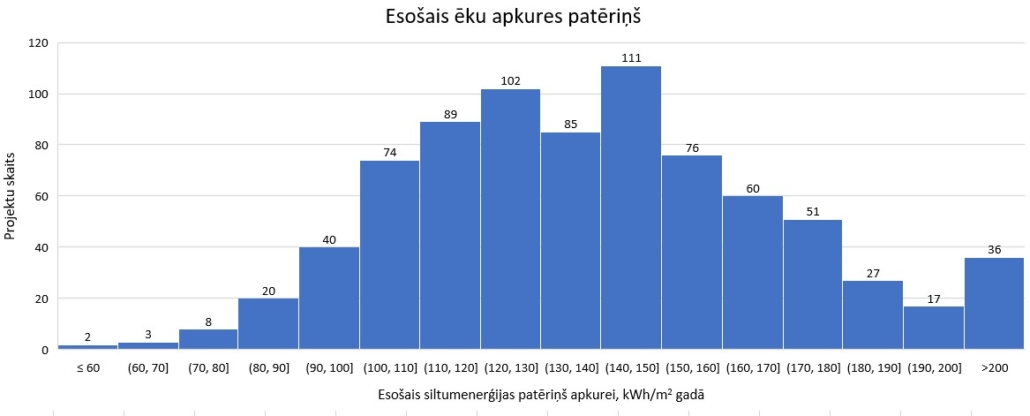
After the implementation of the energy efficiency improvement measures planned within the project, the heating consumption of 90% of the total number of buildings is calculated in the range of 40 to 70 kWh/m2 with a pronounced maximum in the interval of 50…55 kWh/m2, which will correspond to every fourth building. Figure below shows the number of buildings by the heating consumption after the measures.

4.) Heating consumption depending on the heated area. Analyzing the planned heating consumption vs. the existing consumption, a pronounced dependence is clearly visible – the greater the existing heating need, the less efficiency can be achieved with energy efficiency improvement measures (see figure below).
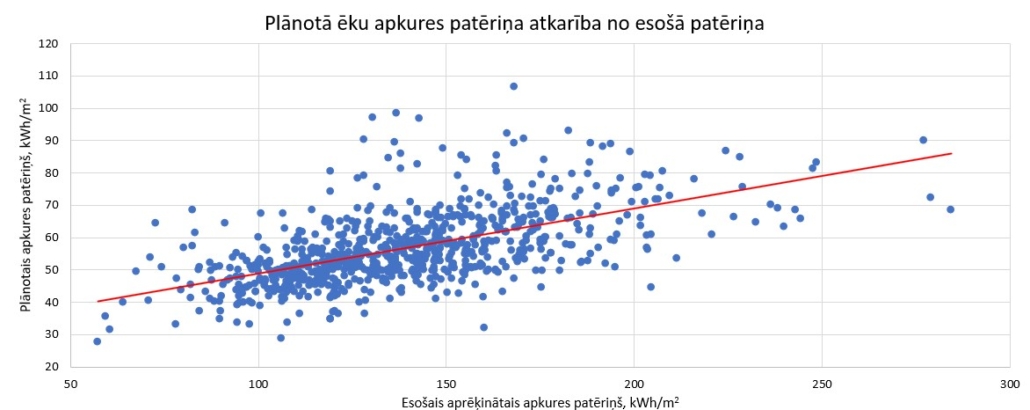
The main reason for this is the influence of the building’s geometry (including compactness) on the proportion of heat loss in the total heat balance. And this is also indicated by the dependence of heating consumption on the total area of the building – the smaller the size of the building, the higher the normalized heating consumption. Figure below shows annual heating energy (kWh/m2) depending on the building area before (blue dots) and after (orange dots) building renovation.
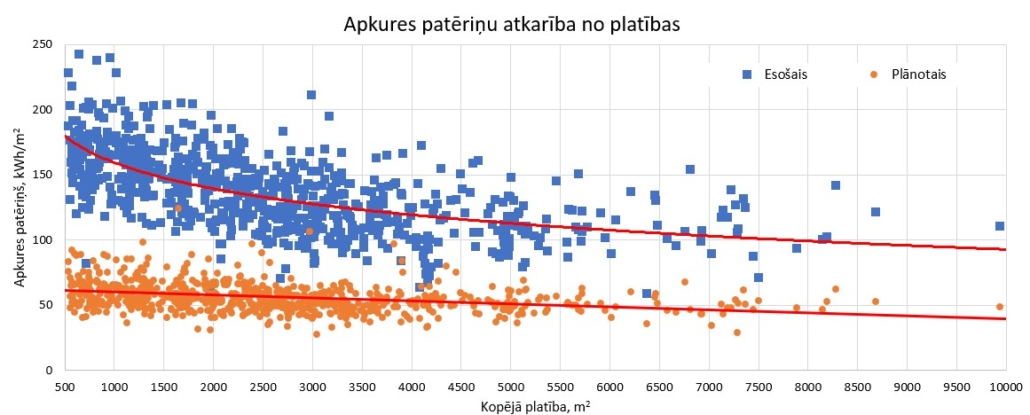
5.) Project costs. Depending on the building area and the type of planned measures, the cost of one project varies from €42,500 to €3,150,000, however, half of all projects are realized with total costs between €200,000 and €400,000. Normalized construction costs per building area (€/m2) for 60% of the projects is between 130 and 220 €/m2 with a pronounced maximum in the interval of 160…190 €/m2, which covers 22% of the buildings. Figure below shows the number of buildings by the project costs per m2 of gross internal floor area.
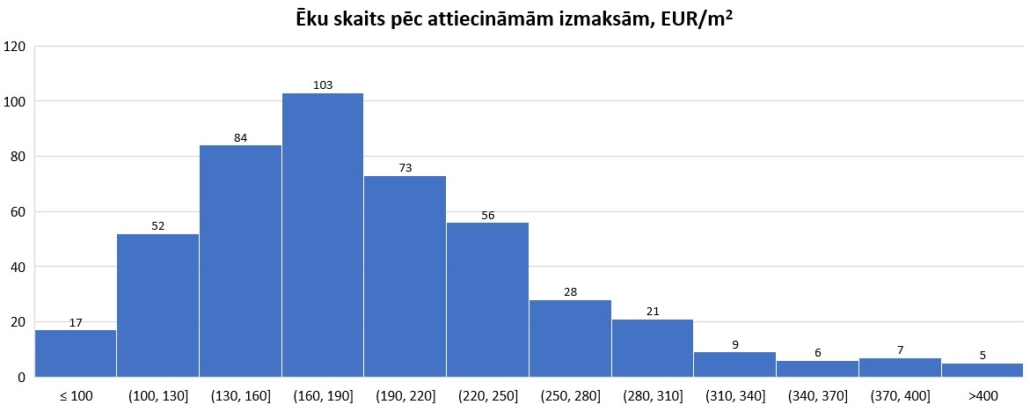
6.) Trends in project costs throughout the duration of the programme. To analyze the changes over time for the ALTUM program ” Energy Efficiency in Multi-Apartment Buildings ” from 2016 to 2022, a statistical analysis of annual data was carried out. It showed that the total eligible costs of projects approved in the first year of the program ranged between 70 and 260 €/m2 with an average indicator of 152 €/m2 (see graph below). However, in the last year of the program, the average cost of projects has increased by 63% – up to 249 €/m2, with the maximum indicator reaching even 460 €/m2. First figure below shows the construction costs for all the accepted project with added time trendline; the second figure displays the yearly averaged values for all 6 project implementation years.
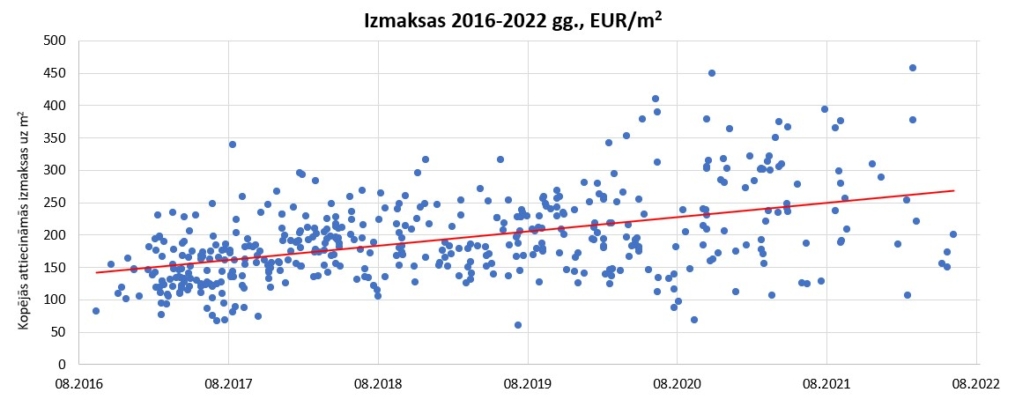
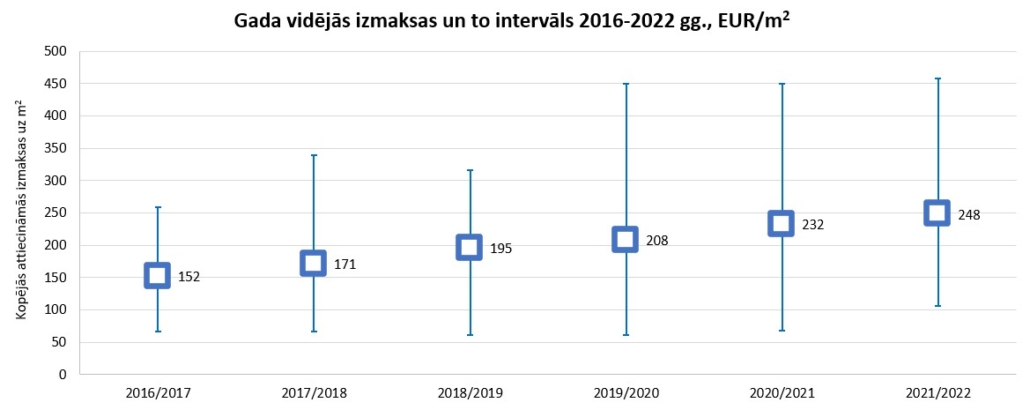
This analysis is a part of the project Analysis of the actual energy consumption of zero energy buildings and the development of the necessary energy efficiency improvement solutions
(Nr. 1.1.1.2/VIAA/3/19/505).



